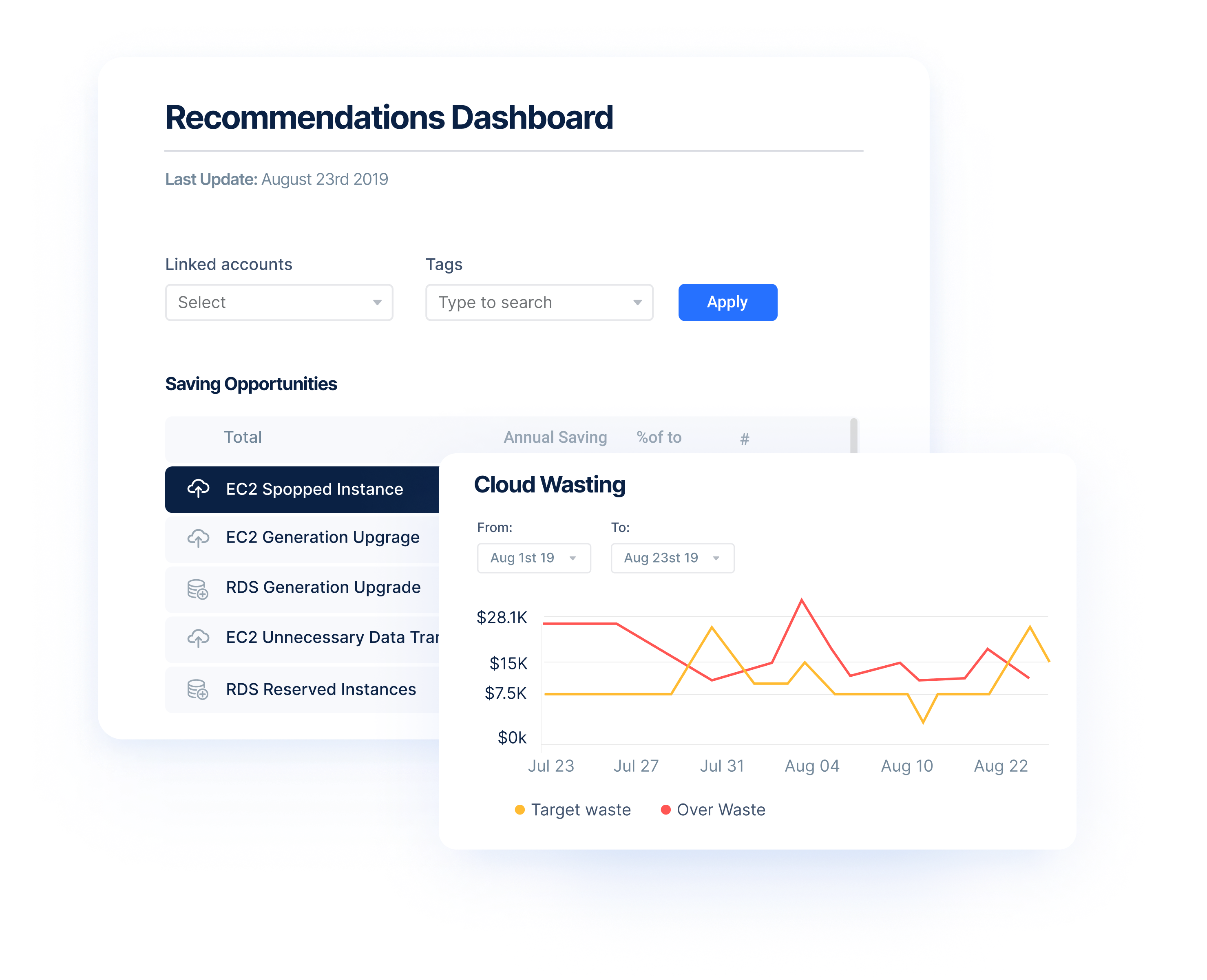Achieving cost savings is one of the main drivers for cloud adoption. But for most companies, controlling cloud spend is much more challenging than anticipated.
In a recent survey, 94% of IT decision makers report they are overspending in the cloud. Our own survey on cloud costs revealed 90% of executives say better cloud cost management and cost reduction is a top priority.
To achieve better cloud financial management, the practice of FinOps — often assigned to a multidisciplinary and cross-functional group — is emerging as the standard for understanding and optimizing cloud computing costs and resources.
To ensure FinOps success, organizations should include a practice of benchmarking and measurement to ensure improvement in cloud management.
Cloud Instance Costs
One of the KPIs most critical for measuring cloud efficiency is hourly cloud service costs. The hourly cost of an instance is affected by a lot of different factors, such as its type, size, and payment plan. An average hourly cost is a way to normalize cloud service costs across projects, teams, use cases and billing methods.
This indicator can be used for any service whose cost can be measured in hours or seconds, but users generally measure some or all of these five services:
- EC2
- RDS
- Redshift
- Open Search
- ElasticCache
The average hourly cost KPI is mainly affected by the following:
- Machine size — The smaller the machine you use, the lower the hourly cost will be. Sometimes a powerful machine is necessary, making improvements irrelevant. But often, you can save money and reduce the average hourly computing cost by choosing a less powerful machine that is appropriate for your use case.
- Form of payment — There are five ways to pay for AWS instances: On-Demand, Savings Plans, Reserved Instances, and Spot Instances. With a cheaper payment option, like Spot Instances (up to 90% off On-Demand prices) or machines covered by a commitment agreement, the hourly cost decreases, improving this metric.
A reduction in average hourly cost is indicative of improved cloud efficiency since it considers multiple parameters.
Anodot for Cloud Cost Management
It is possible to overcome visibility and cost challenges by using native cloud service provider tools, building in house solutions, or purchasing FinOps tools, such as Anodot.
Anodot is the only platform built to measure and drive success in FinOps, giving teams visibility into KPIs and baselines and recommendations to help control spend.
Anodot’s 40+ savings recommendations help teams continually eliminate waste and drive savings by optimizing how you purchase AWS, Azure and GCP.
Enable FinOps with Anodot
Visualize — Understand costs and drive ownership
- Track, divide and attribute every dollar spent in context with its business role or KPI, team, shared service and application
- Customize reports and dashboards for each FinOps stakeholder
- Manager Kubernetes spending and usage from the save view as your multicloud services
Optimize — Cut costs with easy-to-action savings recommendations
- Pursue savings opportunities with personalized cost reduction recommendations
- CLI and console instructions provided alongside each insight enable engineers to take action fast
- Purchase services efficiently with analysis and customized recommendations for commitment and discount vehicles

Monitor — Operate your clouds efficiently and avoid billing surprises
- Machine learning-based forecasting accurately predicts spend and usage
- Detect and resolve irregular spending and usage anomalies
- Access enriched Anodot data via our powerful API and leverage it within your other tools
Anodot’s cost allocation feature helps organizations accurately map multicloud and Kubernetes spending data, assign shared costs equitably, and drive FinOps collaboration throughout your organization.
Inform and empower business decisions at all levels with Anodot’s cloud cost management solution.
Start Reducing Cloud Costs Today!
Connect with one of our cloud cost management specialists to learn how Anodot can help your organization control costs, optimize resources and reduce cloud waste.





